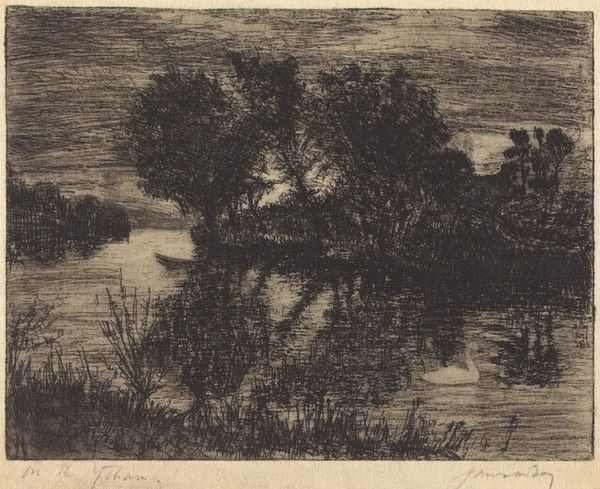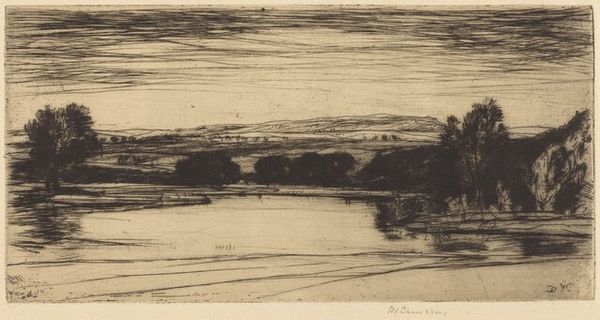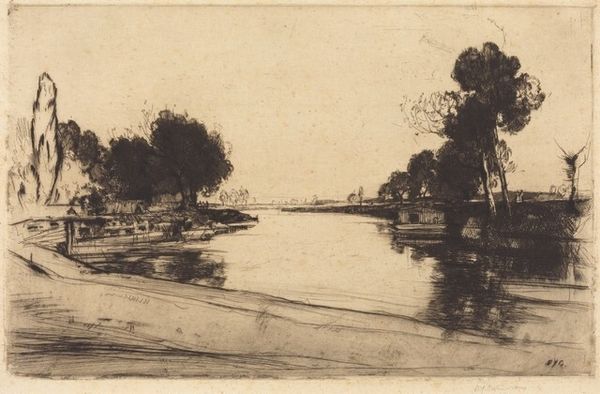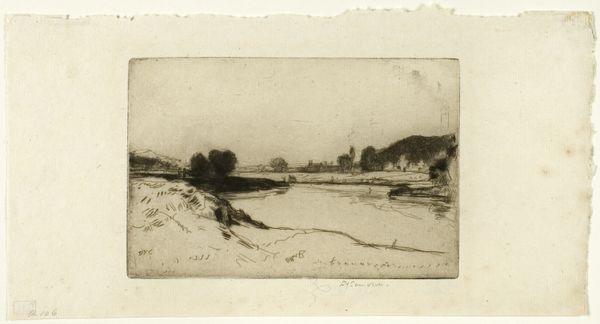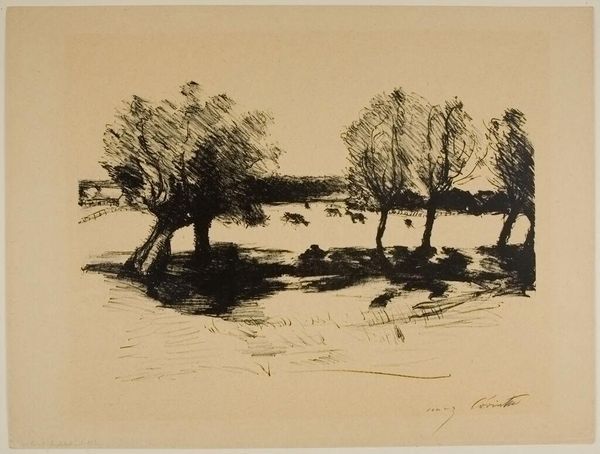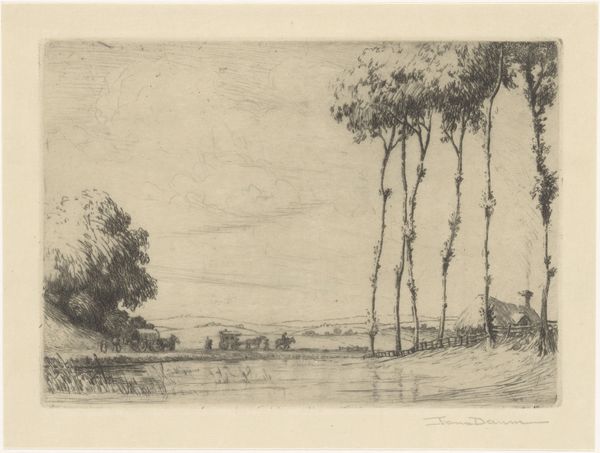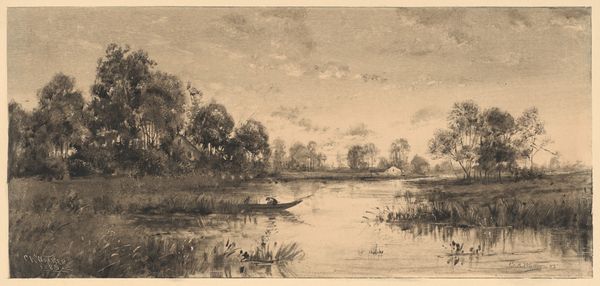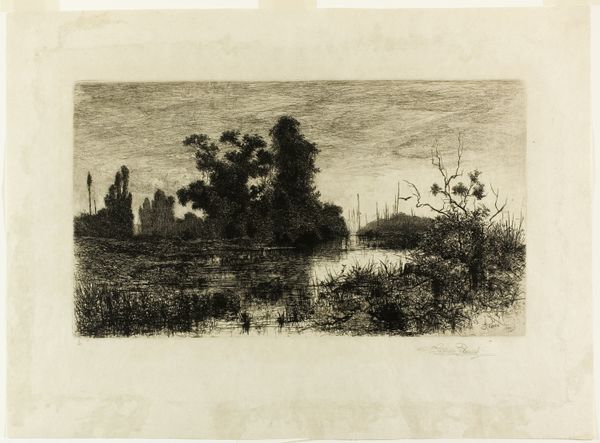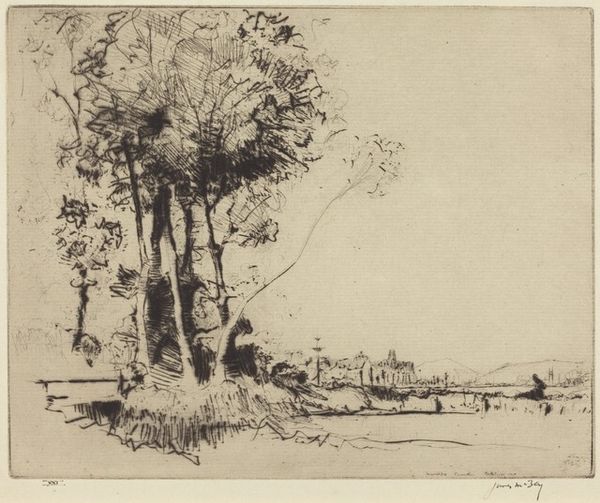
print, etching, intaglio, drypoint
# print
#
etching
#
intaglio
#
landscape
#
drypoint
Copyright: National Gallery of Art: CC0 1.0
Editor: We're looking at David Young Cameron’s “Landscape with Trees: A Dry-Point” from 1892, done with etching and drypoint. It’s quite a subtle piece; at first glance, I’m drawn to the tranquil, almost melancholic atmosphere. How do you interpret this work, with its quiet stillness? Curator: Tranquil is a perfect word. The landscape breathes with a stillness that's almost a held breath. Notice how Cameron uses drypoint to create soft, velvety darks, especially in those trees reflected in the water. It’s as if the scene is being whispered to us. Have you noticed how the drypoint also adds a sense of immediacy? Editor: I do see that, there's something fleeting about it. I imagine it feels a lot like observing the scene with my own eyes. Curator: Exactly. Cameron wasn't just recording a landscape; he was capturing a mood, an experience. This work whispers of late 19th-century Romanticism but is rendered with a stark modernity through the etching technique. Do you think the lack of bright colours contributes to that atmosphere? Editor: Absolutely! It almost feels drained, like a memory faded with time. I wouldn't describe it any other way. Curator: A memory… beautifully put. For me, this isn’t just a landscape; it's an invitation to wander into a personal, reflective space. Something Cameron's own mind produced as an introspective response to nature. Editor: It’s amazing how a few lines can evoke so much feeling. This artwork is more of an emotional space than I first assumed. Thanks for sharing that perspective with me! Curator: And thank you! It is in seeing things differently that we truly understand the art of seeing.
Comments
No comments
Be the first to comment and join the conversation on the ultimate creative platform.

